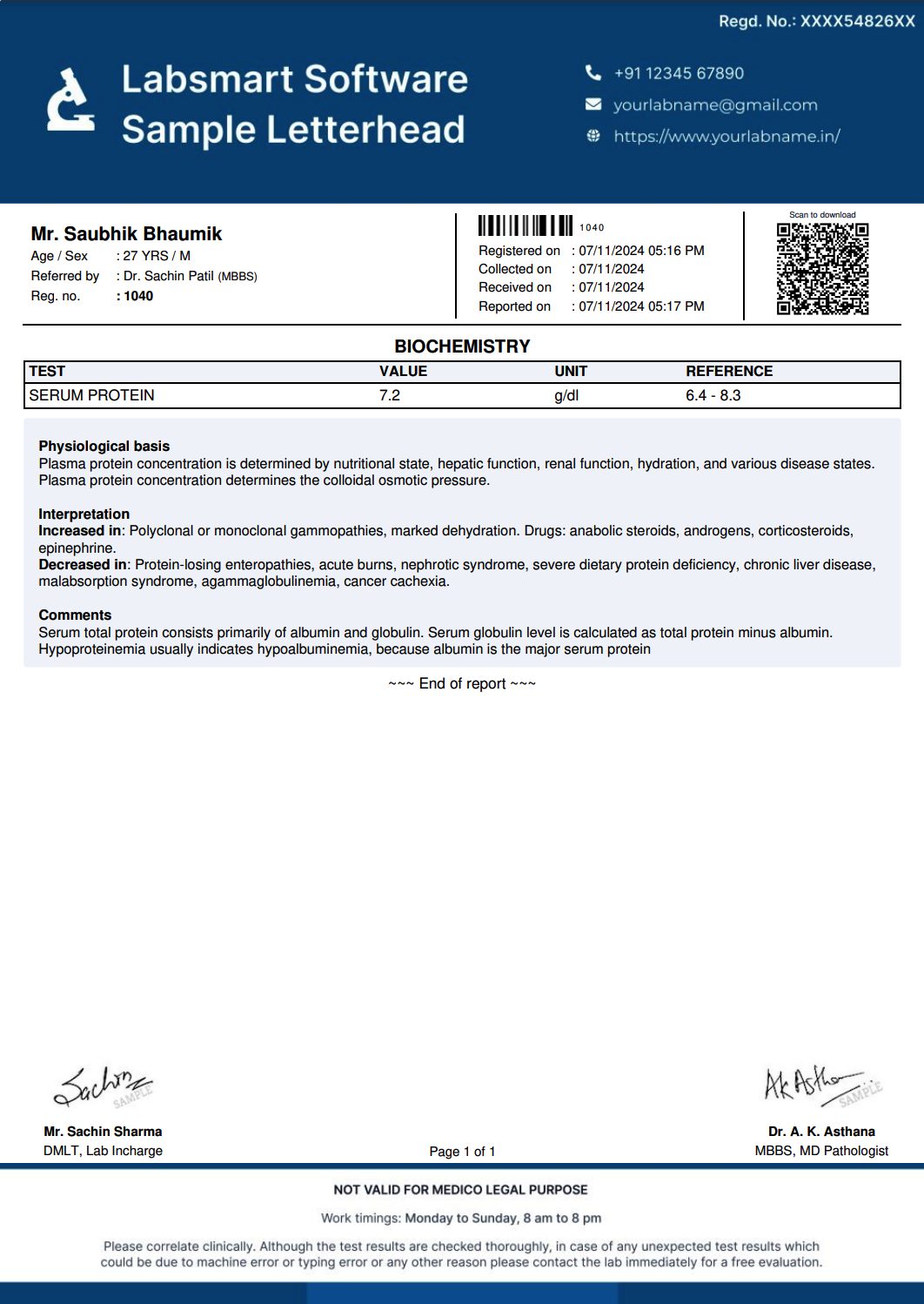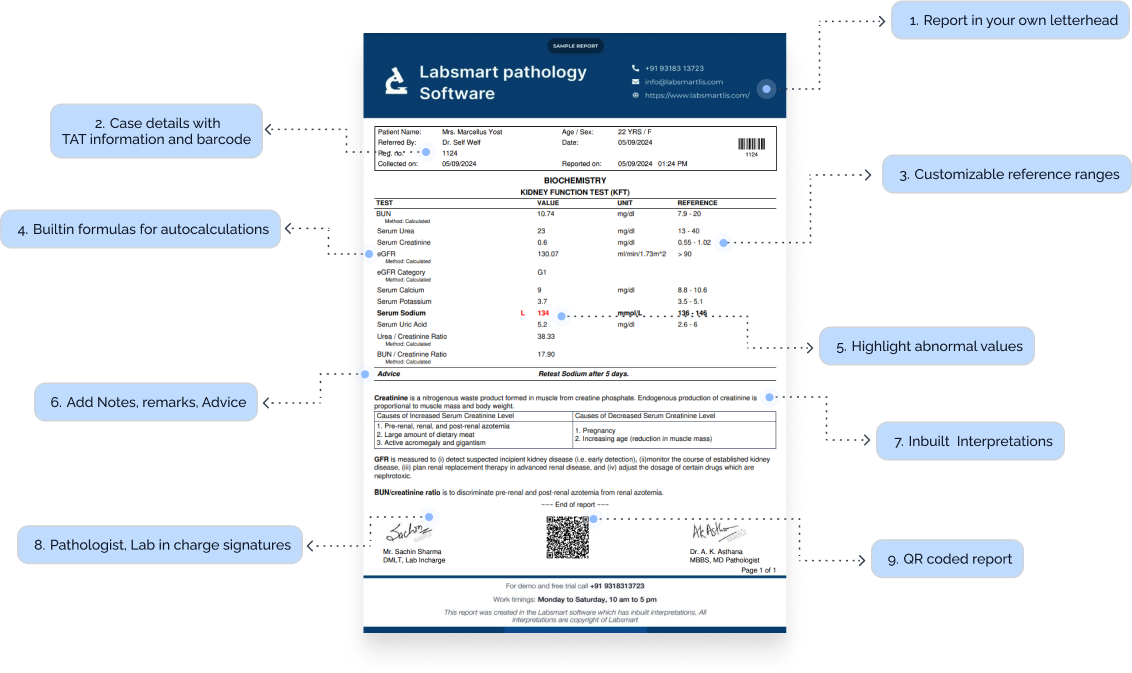What is Protein ?
The Serum Protein test measures the total amount of protein in a patient’s blood, which consists of two main types: albumin and globulin. Proteins play a critical role in various bodily functions, including immune system defense, tissue repair, and fluid balance. Abnormal levels of serum proteins can indicate a variety of conditions, such as liver disease, kidney disease, or nutritional deficiencies. Clinicians may order a Serum Protein test to: Evaluate liver function, as the liver produces most of the body's proteins, and low protein levels may indicate liver dysfunction. Assess kidney function, as kidney damage can lead to the loss of proteins in the urine, resulting in low serum protein levels. Monitor nutritional status, as low protein levels can reflect malnutrition or malabsorption conditions.
Protein Report Format: Breakdown
Here’s what an ideal Protein report format should include:
Header Information:
- Patient Details: Full name, Age, Gender, and ID.
- TAT information: Timestamp for both sample collection and report generation.
- Doctor's Information: Name of the referral doctor, if applicable.
Test Results Section:
-
Patient's results
As obvious as it is, a test report should definitely have the patient's test result.
-
Result's Unit
The unit of the test result must be mentioned correctly in the report. Protein test is generally reported in “g/dl”
-
Protein Normal Value / Reference Range
The report must have the normal Protein range. It can differ slightly based on the reagents used by the lab and other internal factors, but common Protein ranges are:
For any gender, 210 days to 1 year of age: 5.1 - 7.3 For any gender, 1 to 32 year of age: 5.6 - 7.5 For any gender, 2 to 12 year of age: 6 - 8 For any gender, 12 to 100 year of age: 6.4 - 8.3
Interpretations
Nowadays, most labs prefer to add interpretations to the reports, making the report more patient-friendly. Labsmart software has interpretations of all routine test pre-filled in the software.
Footer Section:
-
Certifications:
Display any relevant accreditations (e.g., NABL, ISO), adding to your lab's credibility.
-
Pathologist and technician signature:
It's mandatory to add a Pathologist and technician signature to the report.
Protein Interpretation
In Labsmart software, this is the inbuilt interpretation for Protein
Importance of adding interpretation to reports:
It's very helpful to add interpretation in reports as it makes the reports more patient friendly and also helpful to doctors in some cases. Moreover, presently most labs prefer providing reports with interpretation. Thus, adding interpretation to report will help your lab stay at par with other competitor labs.
Labsmart software
(With Interpretation and auto calculations)
- Billing
- Reports with Interpretation
- Auto calculation where needed
- Check daily business
- WhatsApp reports
* Free plan available

1.5 Crore+
Reports printed & delivered online
1250+
Labs Active
10+
Countries
Protein MS Word format
Download the Ms word editable Protein report format for offline reporting.
Download word format





